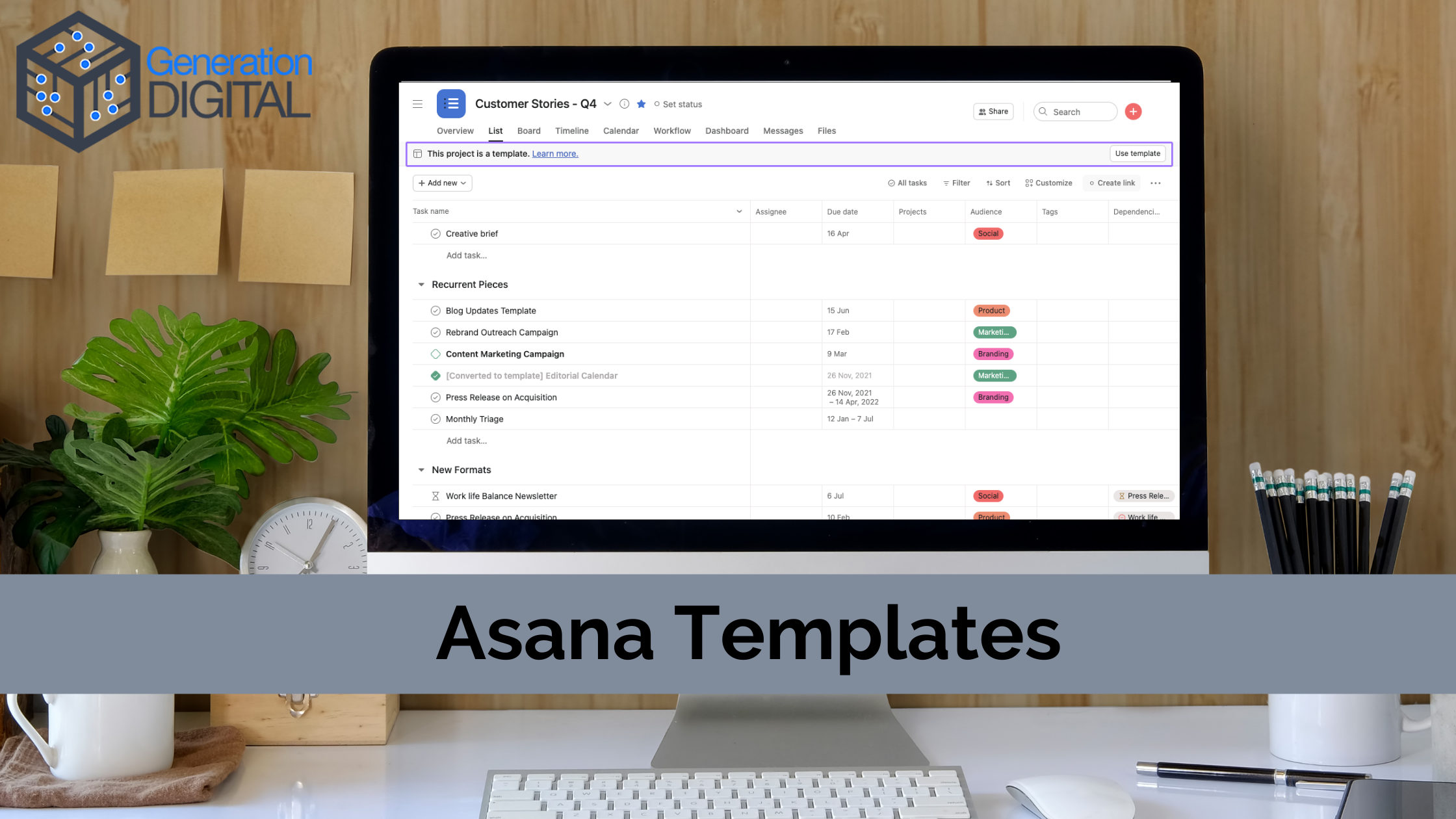There are many benefits when integrating Asana templates into your design workflow. However, combining Asana and templates can be beneficial not just your design work but also the project management side of your business.
Using Asana templates, you can easily create projects and tasks with checklists of subtasks and other key information. This saves a lot of time as you don't need to use outdated spreadsheets, lengthy email threads, and lengthy meetings but boost productivity with simple, intuitive templates.
How to Create your Asana Project Template?
Typically, most organisations use templates such as a Word file, an excel sheet or even a PowerPoint slide. They rely on them to present a new project plan document, a variation request document, a profit and loss excel sheet for new projects, etc. These type of documents are usually kept as an empty copy in a root folder, so managers can keep copying it to the new project folder whenever they need it.
Asana templates function in a similar way. Creating a Template in Asana is a very straight-forward process:
- Create a new project for repetitive tasks.
- Add to it all the sections, tasks, and custom fields (if needed and if you are in a premium account).
- Add the task details like assignee, attachments, and task details when available. While you are at it, make sure you put a good and full description for the project to make sure it will be clear to all what is this going to be for.
All done? Now go to the project header drop-down and select the "Save as Template".
In Asana templates, you cannot edit the template itself once saved. However, you can just create a new version by setting up the project from a template, making changes, then re-saving it as a template (deleting the old one to avoid confusion).
Asana Pre-Made Templates
Depending on the payment plan you are using, you will have access to different pre-made Asana templates.
If it is the free version of Asana, there are two templates that help you learn the basics and start tracking your work in Asana:
- Asana Onboarding: Learn the basics and key features of Asana with our onboarding template.
- Meeting Agenda: Plan your agenda and use Asana to keep your meetings organised and actionable.
When you upgrade to Asana Premium, you'll get six additional templates that contain curated custom fields to help you track additional data in your projects:
- Product Launches: Track all the activities related to launching a new product or feature.
- Bug Tracking: Easily file and fix bugs across browsers and platforms.
- Event Planning: Smoothly plan and run your next event, from vendor management to the day-of timeline.
- Company Goals & Milestones: Set annual company objectives and break them into key milestones, so everyone has visibility into company priorities.
- Candidate Tracking: Track every candidate in your interview pipeline from application to hire.
- Editorial Calendar: Plan your editorial calendar and track all the content your team is producing.
How Do I Copy A Template In Asana?
You can create a new project in Asana by either clicking the orange Omni button at the top right hand side, the small plus icon next to your team name or clicking the bigger plus box in your teams project list. Asana will then give you the option to click on "Use a Template". From here you can see all of your companies pre-made templates under the organisation name, as well as Asana's pre-set templates.
The title of a project can be modified by clicking on the arrow next to it. Using the Convert to template option, select the template to be converted.
If you are creating a kanban style board in Asana, you don't need to start from scratch. Instead, you can use a template design with all the basic sections that teams frequently use.
Always try to make them easy to identify to avoid accidentally overwriting or completing them.
Conclusion
Project templates in Asana are a great way to boost your work with your team. You can standardise how you track meeting notes, onboard your employees, document the checklist to record revenue and expenses in your accounting system, process payroll, and much more.



